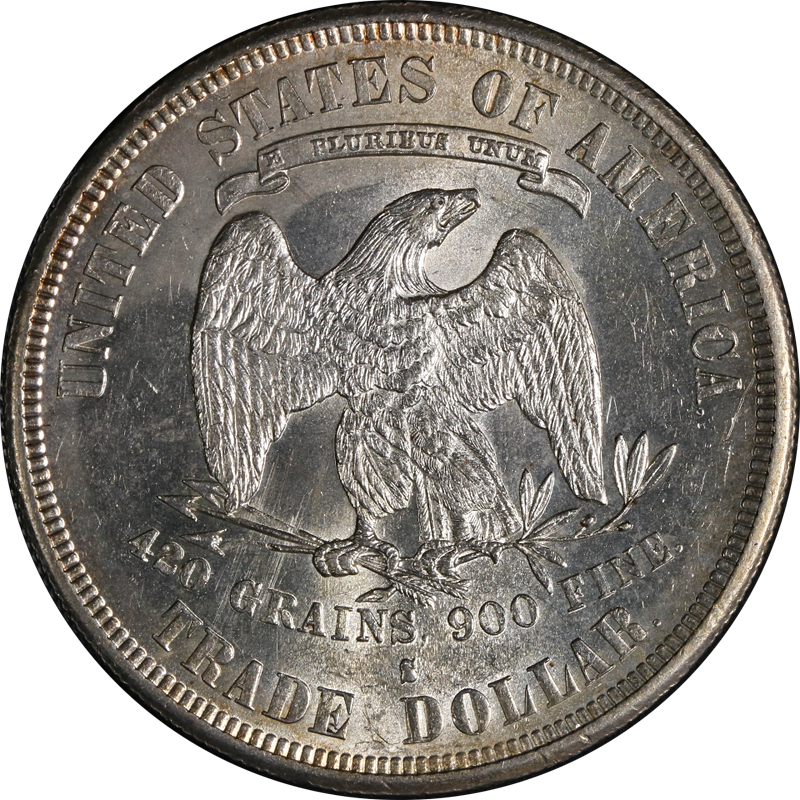

The purpose of the U.S. Trade dollars were to compete with the trade dollars that already existed in East Asia. The U.S. first tried to send the American Silver Dollar for trade in Asia, but it was widely rejected due to its lighter weight. Eventually the Trade Dollar we know today was suggested and the rights of production were passed.
The Trade Dollar was designed by William Barber, the fifth Chief Engraver of the U.S. mint. There was a slight difference between the first obverse of the coin and the second. The first was a left facing seated Liberty. Liberty's right hand is extended and she held a olive branch and only three of her fingers are visible on that hand. On the other side of her is a scroll that reads “Liberty”. The scroll is pointed towards the left. The difference is in the second version is that her hand had 4 fingers, and the scroll pointed down. The reverse of the Trade dollar depicted a bald eagle with its wings spread and it carried a bundle of arrows and an olive branch.
The Trade dollar was not minted for very long, only 12 years to be exact. It was minted from 1873-1885 and was minted in Philadelphia, Carson City, and San Francisco. The coin was on the heavier side, it weighed 27.2 grams, its diameter was 1.5 inches, and it featured a reeded edge. The Morgan Silver Dollar is the successor to this very popular silver coin.
Higher end Trade Dollars, especially in mint state condition will all be relavtively expensive. Most MS-60 graded Trade Dollars and up will cost over a thousand dollars. But there are some that will bring much more and those are the following key dates in the Trade Dollar series:
1873-CC Trade Dollar
1876-CC Trade Dollar
1877-CC Trade Dollar
1878-CC Trade Dollar

